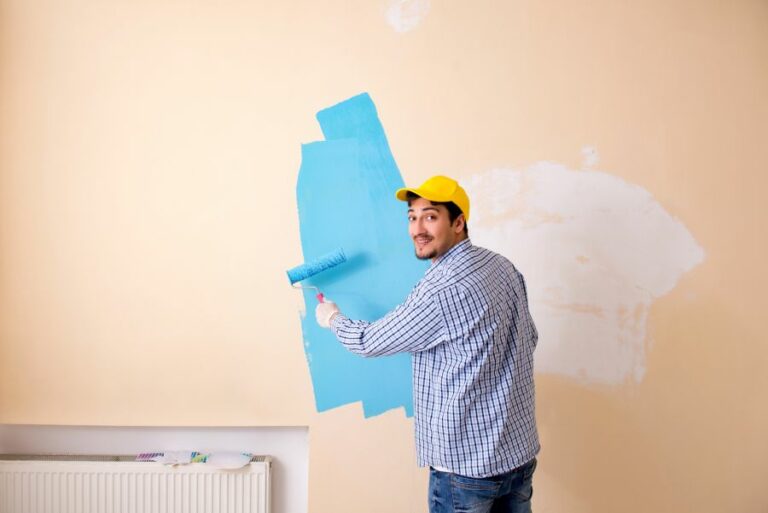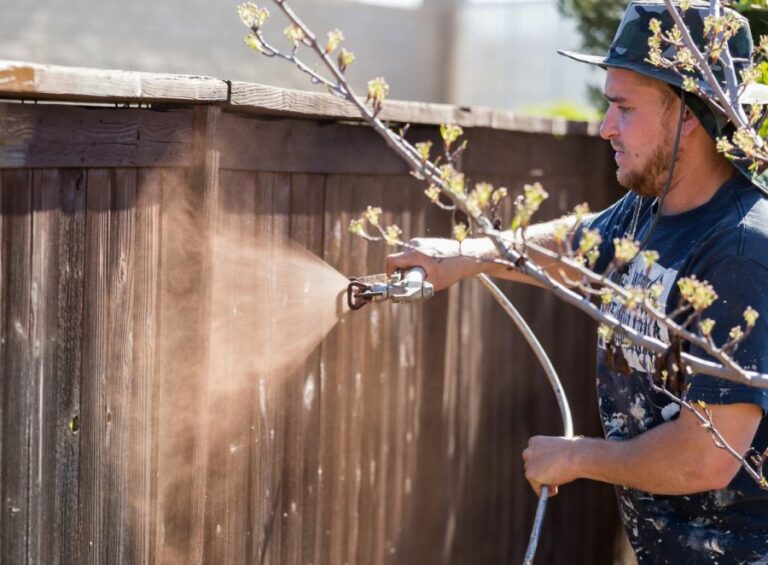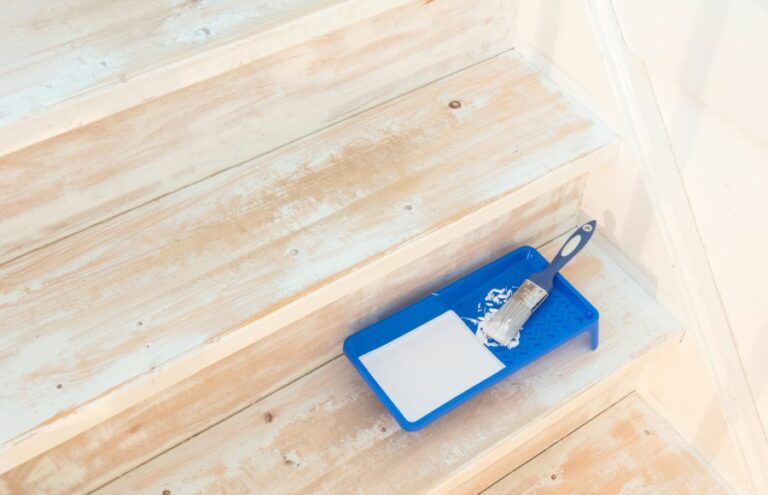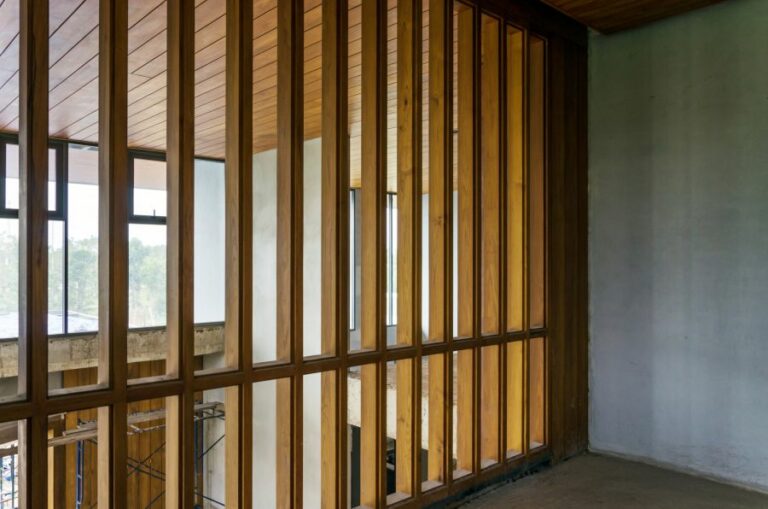How To Clean & Degrease Surfaces Before Paint
Are you struggling with stubborn grease and dirt on surfaces before painting? This article will discuss the most effective methods for cleaning and degreasing surfaces to ensure a flawless paint job. With our tried-and-tested techniques, you’ll be equipped with the knowledge and confidence to transform any space into a vibrant masterpiece.
How to clean & degrease surfaces before paint:>
To clean and degrease surfaces before painting, first remove loose debris and dust. Then, choose an appropriate degreasing cleaner for the material and mix it with warm water as the manufacturer directs. Wear gloves and goggles, apply the cleaner with a microfiber cloth or scrub brush, and rinse thoroughly with water. Dry the surface with a lint-free cloth, and repeat if necessary. Proper surface preparation ensures a successful, long-lasting paint finish.

Ready to transform your space with a fresh coat of paint? Get the best results by first learning how to properly clean and degrease surfaces, ensuring a smooth, long-lasting finish. Read on and discover our helpful tips to prepare your surfaces like a pro!
Contents
Methods for Cleaning & Degreasing Surfaces Prior to Painting
• The Importance of Surface Preparation
Before embarking on any painting project, it is crucial to ensure the surface you’re working on is thoroughly cleaned and degreased. This is because grease, dirt, and other residue can interfere with paint adhesion, leading to poor results such as uneven coverage, peeling, and flaking.
• Essential Tools and Materials
To clean and degrease surfaces effectively, you’ll need to gather some essential tools and materials.
- Degreasing cleaner or solution
- Warm water
- Bucket
- Microfiber cloths or rags
- Scrub brush
- Gloves
- Safety goggles
- Dish soap or household cleaner for basic cleaning
• Choose the Right Cleaner
There is an array of specialized degreasing products available on the market, each tailored to a specific type of surface. It’s important to select the appropriate cleaner for your particular project to achieve the best results.
For general-purpose cleaning and degreasing, a household cleaner or dish soap can be mixed with warm water, creating a mild solution that is safe for most surfaces. For more heavy-duty jobs or stubborn grease, consider using a commercial degreaser or cleaner formulated specifically for the surface you’re working on. Always be sure to follow the manufacturer’s instructions for use and dilution ratios.
• Prepping the Surface
Before applying any cleaning solution, clear the area of any loose debris or dirt. This includes dusting or sweeping the surface, removing any items or furniture that may be in the way, and covering nearby surfaces that you do not want to be splashed with the cleaning solution.
Wear gloves and safety goggles to protect yourself from chemicals or debris during the cleaning process.
• Applying the Cleaner
Dilute and apply the cleaning solution as directed by the manufacturer. When applying the cleaner, use a microfiber cloth, rag, or soft scrub brush to agitate the surface gently, ensuring you cover the entire area.
Be mindful not to use excessive force as this may cause damage to the surface or harm the painted finish.
For textured surfaces or areas with hard-to-reach nooks and crannies, consider using a soft, flexible brush to work the cleaner into these spots effectively.
Be sure to give the cleaner enough time to dissolve dirt and grease, as outlined in the manufacturer’s instructions.
• Rinsing and Drying
Once the cleaner has been allowed to work, it is essential to rinse the surface thoroughly to remove any residual cleaner and dissolved contaminants. This can typically be achieved using clean, warm water and a microfiber cloth, ensuring you avoid over-wetting the surface.
With the surface rinsed, promptly dry it with a clean, lint-free cloth to prevent water spots and streaking. For larger areas or outdoor surfaces, consider air drying or using a leaf blower to expedite the process.
• Inspecting and Repeating
After the surface has been cleaned and dried, inspect it for any remaining grease or dirt. If residues are still apparent, repeat the cleaning process until the surface is free from contaminants.
• Final Thoughts
Properly cleaning and degreasing a surface before painting is a critical step in ensuring a successful and lasting finish. By using the appropriate cleaning products, tools, and techniques, you can achieve a pristine surface that is ready for the application of paint.
The guidelines laid out in this article apply to various surfaces but always remember to consult the manufacturer’s instructions for your specific cleaner or degreaser.
Step | Description |
|---|---|
1 | Remove all items and clear the surface area. |
2 | Wipe the surface with a dry cloth to remove dust and debris. |
3 | Prepare a cleaning solution by mixing water and a degreasing cleaner in a bucket. |
4 | Dip a sponge or cloth in the cleaning solution and wring it out. |
5 | Wipe down the surface with the damp sponge or cloth, ensuring to cover all areas. |
6 | Allow the cleaning solution to sit on the surface for the time specified on the degreaser’s label. |
7 | Use a scrub brush or sponge to scrub away any stubborn grease or grime. |
8 | Rinse the surface thoroughly with clean water, removing all traces of the cleaning solution and degreaser. |
9 | Dry the surface completely with a clean cloth or let it air dry before painting. |
10 | Ensure the surface is clean and free of any residue before starting the painting process. |







